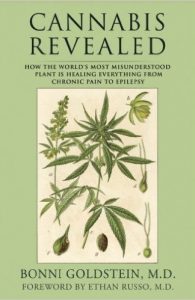
The most commonly searched terms that get parents here are: “CBD“, “Kids” and “Dosing“. They’re asking the internet because doctors certainly aren’t telling them. Except as a social worker, I ethically can’t tell you either. What I can do, however, is empower you with the tools and resources you need to figure it out yourself. I promise, once you get the hang of it, you will feel even stronger and more equipped to care for your child because you did.
To that end, my number one resource for families new to this medicine is Cannabis Revealed, the new book by So Cal’s ally and champion Dr. Bonni Goldstein. Four years ago, we spent a lot of time asking questions and sharing our experiences in Facebook groups trying to piece together the information you can now simply read in her book. This book is a must have and you can buy it here. I would take a minute and do that now.
I didn’t even know what a seizure looked like.
“It’s a handbook really. I found myself referencing it the other day to answer a question I had,” Dr. Bonni told me when I got her on the phone. It felt very important to verbally congratulate and thank her for such a useful contribution. Our community deserves solid resources and this one book alone will answer a good chunk of your questions.
For those asking WHAT makes cannabis medicine and WHY it works, chapters 1-3 are for you. She breaks down the parts of the plant, explaining different phytocannabinoids, terpenoids, “sativa” v. “indica” strains, “the entourage effect,” and marijuana’s safety profile. You’ll learn about the endocannabinoid system. She gets into what science does and doesn’t tell us, and for those of you who like science, her book is very well researched.
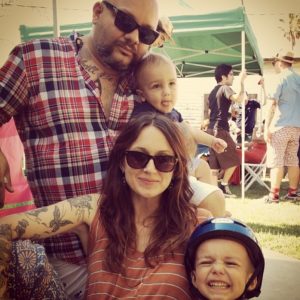
The helmet phase was the hardest. I was completely suicidal at this Fourth of July BBQ.
For parents asking HOW to use cannabis, chapter 4 and the Appendix are specifically for you. She demystifies the languaging and teaches you all this new lingo in an easy to understand way. It’s important to understand what these terms mean because these are the key variables you’ll need to make choices about when creating your kid’s individualized plan. For example:
- which cannabinoid to start with (i.e. CBD, THCA, THC, etc.)
- which delivery system (i.e. inhalation, oral ingestion, topical, etc.)
- which strain, ratio and concentration
- which product line and how to evaluate their quality, including how to read the label and why it’s important to ask for lab results
**This is one of Dr. Bonni’s main sticking points - “Your product needs to be CLEAN, TESTED and RELIABLE,” she reinforces over and over. Don’t give your child a suspect product. You can find a list of products that our families have tested and trusted on our resource page. But please don’t take our word for it, get it tested yourself to confirm. Those of you with further questions regarding the risks that come with cannabis, Chapter 5 will answer your concerns.
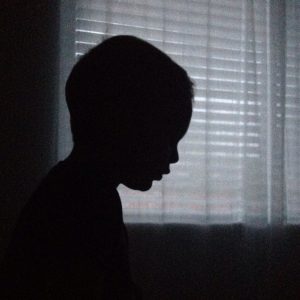
5 weeks seizure free was very surreal.
**Another main sticking points is HAVING A PLAN. “You’d be surprised. People bounce around with no approach what so ever. You HAVE to have some methodology to see results,” she emphasized. Don’t just jump behind the wheel! You’ll feel way more confident starting your journey the more educated you are. It’s important to allow yourself time to get familiar with the lay of the land before you take off.
Her book is your map, but your path will be your own. She stops just short of telling you how to do it. We talked about the ethics around providing generic dosing schedules in a book, when we know there is probably going to be a lot of customizing. Our kids have serious situations and “treating them with cannabis is way too individual to be generalized in a book,” she said.
In fact one of the primary benefits of using cannabis is that it can be individualized to your child’s unique needs. As our kids’ doctor, she hears all the ways families are doing it. I felt lucky to be able to pick her brain for some extra tips:
A Solid Place To Start:
Her basic approach is to start where we all start when treating epilepsy - using the dosing standard developed early on by parents at The Realm of Caring - and customizing from there. These guidelines start high CBD at .5 mg per pound of your child, divided into 3 doses a day, taken 2 hours apart from other anti-epileptic medications (AEDs)**, and increased by the same every 2-3 weeks until desired results are seen. You may alter any of those variables as required by your individual situation. At the Realm of Caring’s educational portal you can download this schedule as a spreadsheet that will calculate the math for you. (If you are using Palmetto Harmony, Hailey’s Hope, Myriam’s Hope or Cannakids their products also come with a standard dosing schedule.)
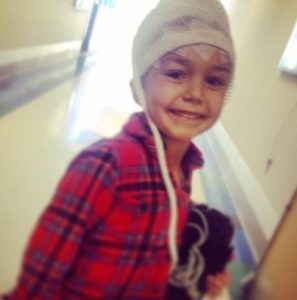
Robby’s first normal EEG was 4 months after starting high CBD.
One common variable to modify is to start lower - using .25 mg per pound. I personally felt more comfortable starting my 3 year old son at that amount because I felt like it gave me more control. Robby still felt like a baby to me and he was on a high amount of an AED known to dangerously interact with high CBD. Starting low and titrating up slowly tends to be generally advisable. She shared that she usually doesn’t go higher than 4-5 mg per pound. You’ll be closely watching and tracking your child’s response and will know when going higher is helping or not.
**Pharmaceutical medications that use the p450 enzyme in the liver have been known to interact with high CBD in some individuals. Before starting high CBD, be sure to find out if your kid’s AEDs use the p450. Get baseline lab results prior to starting and test ongoing, especially if you see any off reactions. Spacing pharmaceuticals and CBD by 2 hours has been noted by parents to help avoid interactions.
A Smart Place to Stop:
Dr. Bonni doesn’t advise every child use high CBD, especially if they are on more than 3 AEDs and some of them use the p450. She was frank, “It never goes well.” We talked about the lack of research supporting the common practice of treating epilepsy with polytherapy and how adding more of anything, even if it’s cannabis, generally isn’t going to help the situation. In fact, there can be dangerous complications that can be challenging to sort out the more variables are involved.
If this is your situation, Dr. Bonni generally recommends coming up with a plan for your pharmaceuticals first, before adding cannabis to the mix. For example, if you know one medication isn’t working and were considering weaning anyway, it’s a good idea to talk to your neurologist about possibly doing that before starting.
A Good Plan B:
For kids on multiple AEDs, another good choice instead of high CBD is THCA. Dr. Bonni said she’s been referring more and more patients to it lately because THCA doesn’t involve the liver. “THCA seems to interact less,” she’s observed. We are very lucky to have this option in California. Parents like it because THCA is effective, gentle, and non-psychoactive like high CBD. It is also easy to make and tends to be more affordable than high CBD. Starting with 3 doses of 5 mg a day of THCA, titrating up every 2-3 weeks, is one common place to start.
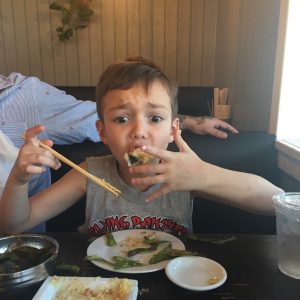
Robby celebrated 3-years of seizure control last month with a low-key sushi feast. He’s only had a handful of breakthrough seizures, the last was over a year ago . . . but who’s counting.
More Than Hope:
A strength of Dr. Bonni’s book is her emphasis on how versatile cannabis is. Not only does she describe the different ways to use the different parts of the plant, she highlights a variety of different diseases cannabis has been reported to benefit. Chapter 6 features 28 different diseases, from Autism to ALS to Cancer to Diabetes to Hepatitis C to Parkinson’s to . . . I find myself wondering what diseases cannabis doesn’t relieve. These anecdotal stories speak for themselves, providing hope and effective options where there are often few.
The Good Doctor:
“I didn’t come to my patients already knowing about Cannabis, I listened to their experiences and learned from my patients.” And isn’t that what we all want the most from our doctor - a good listener and partner? We talked about how sad and discouraging it is that there still aren’t more Dr. Bonni’s out there. She wishes she could treat everyone and reassured me that her wait list is moving by about 10 folks a month.
So what do we do since we can’t clone Dr. Bonni? We do what she does - we listen to the experiences of parents already using it. Create a local support group. And use the support already available to you. As much as I like to encourage and support parents to take charge of their children’s treatment, there are definitely situations that understandably need medical direction.
**You need to tell your doctor you are using cannabis and you need to tell them what you need. **It is absolutely appropriate to expect them to monitor your child’s AED while using cannabis, especially if it uses the p450 or if you are considering adding CBD to polytherapy or weaning a medication.** But don’t expect them to tell you how to dose (I personally would be generally suspect if they tried). My son’s neurologist has never once told me to raise or lower my son’s CBD, but he lowered my son’s AED when the labs I asked him to order (because my mom friends warned me this could happen) did identify a dangerous interaction. I actually didn’t need a Dr. Bonni for that - I felt empowered to ask for what I needed, our doctor was sufficiently “supportive” and we were able to avoid a problem.
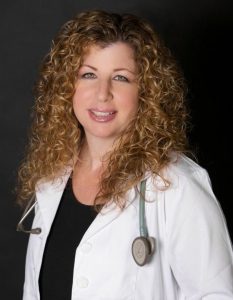
Dr. Bonni is an angel straight from heaven.
Your doctor may not be as open and amazing as Dr. Bonni, but the ones already on your team can still be helpful. READ HER BOOK - it will fill in a lot of the gaps, giving you the information you’d typically ask them for. And to help bring them along, I loved Dr. Bonni’s parting tip - since doctors need this education too, give them a copy of her book.
Huge thanks to Dr. Bonni for supporting and empowering our families. We love you.
You can get on Dr. Bonni’s waitlist at Canna-Centers here and read more from her at Marijuana.com.

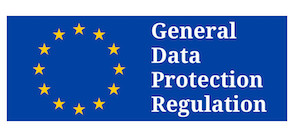
Beautiful. Thank you. This was Great